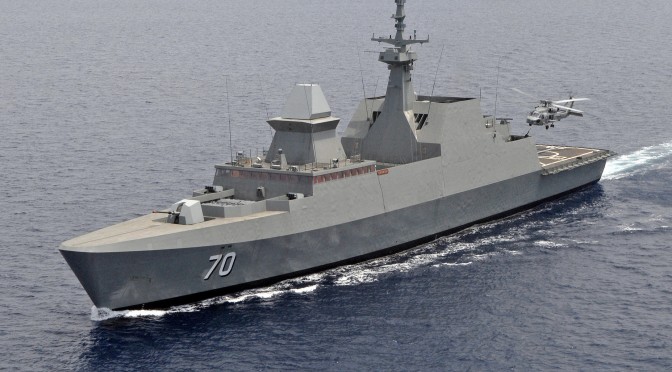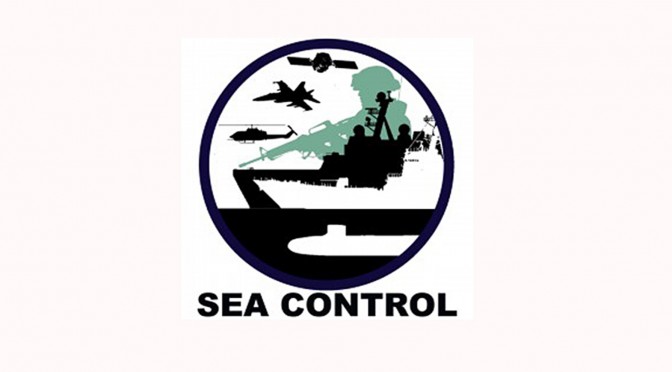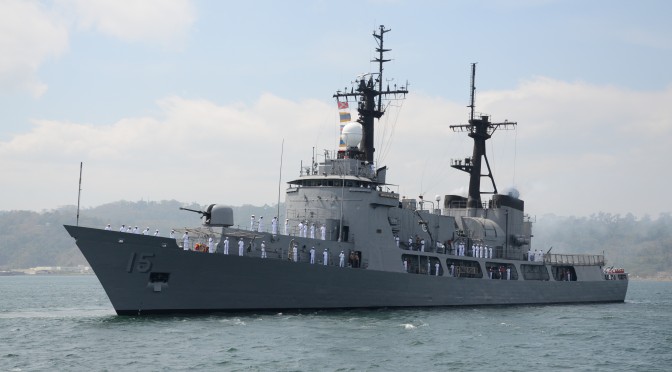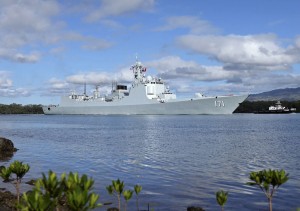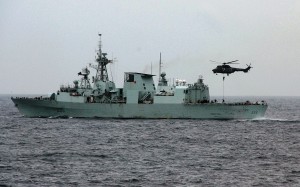By Paul Pryce
Among the maritime forces of the small Southeast Asian states, the Republic of Singapore Navy (RSN) stands as one of the most robust. As some regional partners, such as the Indonesian Navy, struggle to acquire a submarine fleet, the RSN is currently well-served by two Challenger-class (formerly Sjöormen-class in the Swedish Navy) and two Archer-class (formerly Västergötland-class in the Swedish Navy) diesel-electric submarines, which Singapore began acquiring at the turn of the century. Yet RSN defence planning and strategic intent is difficult to discern, since Singapore has never released a formal maritime strategy or, for that matter, a comprehensive national security strategy. The closest approximation of such a document was released in 2004, which has not been updated since, and discusses the importance of law enforcement and intelligence agencies in the fight against terrorist organizations like Jemaah Islamiyah (JI) and al-Qaeda.
[otw_shortcode_button href=”https://cimsec.org/buying-cimsec-war-bonds/18115″ size=”medium” icon_position=”right” shape=”round” color_class=”otw-blue”]Donate to CIMSEC![/otw_shortcode_button]
In the absence of a clear road map for the development of the RSN, an excellent analysis is offered by Dr. Swee Lean Collin Koh in the 18-page Naval War College Review article “Seeking Balance: Force Projection, Confidence Building, and the Republic of Singapore Navy,” published in 2012. The author focuses on the evolution of Singapore’s maritime force to date in order to offer some impressions of its future course, detailing how the RSN matured from a “sea-denial” navy to a “sea-control” navy.
With regard to that maturation, Dr. Koh points out three procurement projects that were key to the RSN attaining the capacity for sea control. First, the aforementioned acquisition of a submarine fleet grants the RSN some capacity for force projection and covert intelligence-gathering beyond Singapore’s waters, though this has drawn condemnation from neighbours like Indonesia. It seems the RSN is likely to retain these capabilities in the future, as it was announced in late 2013 that Singapore intends to phase out its two older Challenger-class submarines and replace these vessels with two Type 218 diesel-electric submarines designed by Germany-based ThyssenKrupp Marine Systems, the first of which is to be delivered in 2020.
Secondly, the acquisition between 2007 and 2009 of six Formidable-class stealth-capable guided-missile frigates, based on the French La Fayette-class frigate design,
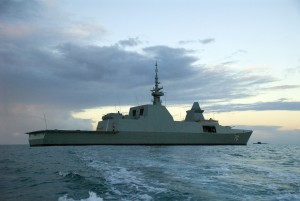
provided the RSN with true blue-water combat capabilities and greatly contribute to the force’s capacity for anti-air and anti-submarine warfare. This was, according to the author, not a procurement ‘out of left field’ but instead built incrementally on existing RSN capabilities, such as the six Victory-class corvettes Singapore acquired from Germany’s Friedrich Lürssen Werft in 1990-1991. In any case, the blue-water capability of the RSN has subsequently been demonstrated by the deployment of Formidable-class frigates RSS Intrepid in 2012 and RSS Tenacious in 2014 in support of Combined Task Force 151 in counter-piracy operations in the Gulf of Aden.

Finally, the RSN’s four locally built Endurance-class landing platform docks (LPDs) provide the force with strategic sealift. These are indicative of Singapore’s strategic intent insofar as the past 15 years of defence procurement are concerned – namely that Singapore intends to employ its navy first and foremost in a humanitarian role in multilateral operations. For example, three of the RSN’s four LPDs were deployed in response to the 2004 tsunami and earthquake in Aceh, Indonesia, providing valuable humanitarian assistance. The LPDs have since been deployed in support of reconstruction efforts in Iraq, counter-piracy operations off the coast of Somalia, and on search and rescue missions in the Indian Ocean region. Interestingly, a fifth vessel of this class was produced by Singapore for export to Thailand in 2012.
This tendency to participate in multilateral operations and exercises, which has increased dramatically since the 1980s, reflects an important undercurrent of Singapore’s defence planning, according to Dr. Koh. Although the resources and equipment available to the RSN could have been much more rapidly expanded, fleet expansion and modernization has been incremental so as to avoid setting off a regional arms race. As a small state, Singapore has a particularly keen interest in conflict prevention, opting to resolve any disputes in the courts rather than on the battlefield. This strategy has served Singapore well, such as when an ongoing dispute between Singapore and Malaysia over ownership of Pedra Branca, several islets at the eastern entrance to the Singapore Strait, was resolved in 2008 by an International Court of Justice decision in favour of Singapore’s claim. Meanwhile, in order to avoid any future tensions with Malaysia, the RSN has delegated patrols of such waterways to the Police Coast Guard, which acquired a fleet of ten specially designed Shark-class patrol boats from Damen Schelde in 2009. These vessels are in fact armed – specifically with a Mk 23 Rafael Typhoon Weapon System with 25mm Bushmaster chain gun and two CIS 50 12.7mm machine guns – but do not share the overtly militaristic impression that an RSN patrol would likely convey.
This could also explain the lack of a formal maritime strategy, though the author does not explicitly draw this connection. By identifying security threats to be addressed by the RSN, there would be the risk of ratcheting up tensions with one neighbour or another. Beyond interfering with any ongoing negotiations Singapore may have with claimants like Malaysia and Indonesia, including territorial disputes in a strategic guidance document would effectively “securitize” relations within Southeast Asia. First introduced as a theory of international relations in the 1990s by the scholars Barry Buzan, Ole Waever, and Jaap de Wilde, securitization occurs when an issue is presented as a security threat that requires the intervention of state

authorities and the employment of extraordinary means, such as the use of military force, rather than following the course of political dialogue. Put differently, Singapore’s assertion of ownership over a specific islet or body of water in a kind of ‘National Security Strategy’ would only serve to escalate tensions, prompting neighbours to make equally bold claims and arm themselves to enforce those same claims. Such escalation can be seen in other parts of the Asia-Pacific region due to assertive behaviour from one or more parties; Singapore’s quiet caution has helped to avoid the spread of such conflict and reinforced international legalist norms of behaviour.
A development not anticipated by this article, however, is the emergence of a new, locally-produced ship design to succeed the Fearless-class patrol vessels that have served the RSN for two decades. The Independence-class littoral mission vessel is larger in size, with a displacement of 1,200 tonnes and a length of 80 metres, and will be considerably more adaptable than the previous patrol vessels. In total, eight vessels will be built, the first of which is expected to reach completion by the end of 2016. Given that the LPDs were also built at home, this is very likely an indication that Singapore seeks to develop its domestic shipbuilding industry and it will be worth watching whether this is followed by efforts to promote designs for export. This would not be unprecedented, considering the aforementioned sale of an LPD in 2012 to the Royal Thai Navy. It also leaves some question as to whether Singapore, following the passing of Lee Kuan Yew, may depart from its historically cautious approach and seek a new, more assertive role for the RSN. Until that question is settled, Dr. Koh’s work for the Naval War College Review is the clearest narrative readers may find of RSN fleet modernization and expansion.
Paul Pryce is Political Advisor to the Consul General of Japan in Calgary and a long-time member of the Center for International Maritime Security (CIMSEC). He has previously written as the Senior Research Fellow for the Atlantic Council of Canada’s Maritime Nation Program.
[otw_shortcode_button href=”https://cimsec.org/buying-cimsec-war-bonds/18115″ size=”medium” icon_position=”right” shape=”round” color_class=”otw-blue”]Donate to CIMSEC![/otw_shortcode_button]

